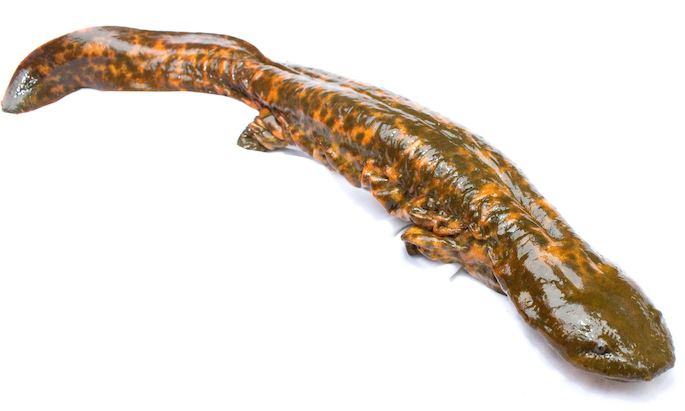
Hellbenders — large, fully aquatic salamanders found in eastern and midwestern U.S. streams and rivers — have suffered population declines like amphibians worldwide. The Ozark hellbender subspecies is on the IUCN Red List of threatened species.
To explore the hellbender immune response to fungal pathogens that are killing amphibians, Rebecca Hardman, DVM, PhD, Louise Rollins-Smith, PhD, and colleagues collected and studied skin secretions, which include antimicrobial peptides (AMPs), from free-ranging hellbenders. They found that hellbender AMPs inhibited the growth of two chytrid fungi (Bd and Bsal). Skin peptides were more inhibitory of Bsal than Bd, and peptides from hellbenders with toe lesions (chronic disease) had reduced ability to inhibit Bd. Mass spectrometry studies revealed candidate peptides with anti-chytrid activity.
The findings, published in Scientific Reports, support hellbender skin secretions as being important for innate immunity against chytrid pathogens and suggest that chronic disease may have a large impact on population health. The insights are important for conservation of these unique stream predators, the authors state.
Hardman, first author of the report, completed the studies as part of her doctoral dissertation research at the University of Tennessee, Knoxville. She was a visiting scientist in the Vanderbilt laboratory of Rollins-Smith, where she worked with co-author Laura Reinert to enrich skin secretions for peptides and test their antifungal activity. Other co-authors include Kendall Oziminski and Debra Miller, DVM, PhD, at UT, Knoxville, and Kelly Irwin at the Arkansas Game and Fish Commission.
The research was supported by the Arkansas Game and Fish Commission, U.S. Fish and Wildlife Service Competitive State Wildlife Grant, University of Tennessee FEAR Grant, and National Science Foundation grants.












